Inside the World of San Sebastian's Gastronomic Secret Societies
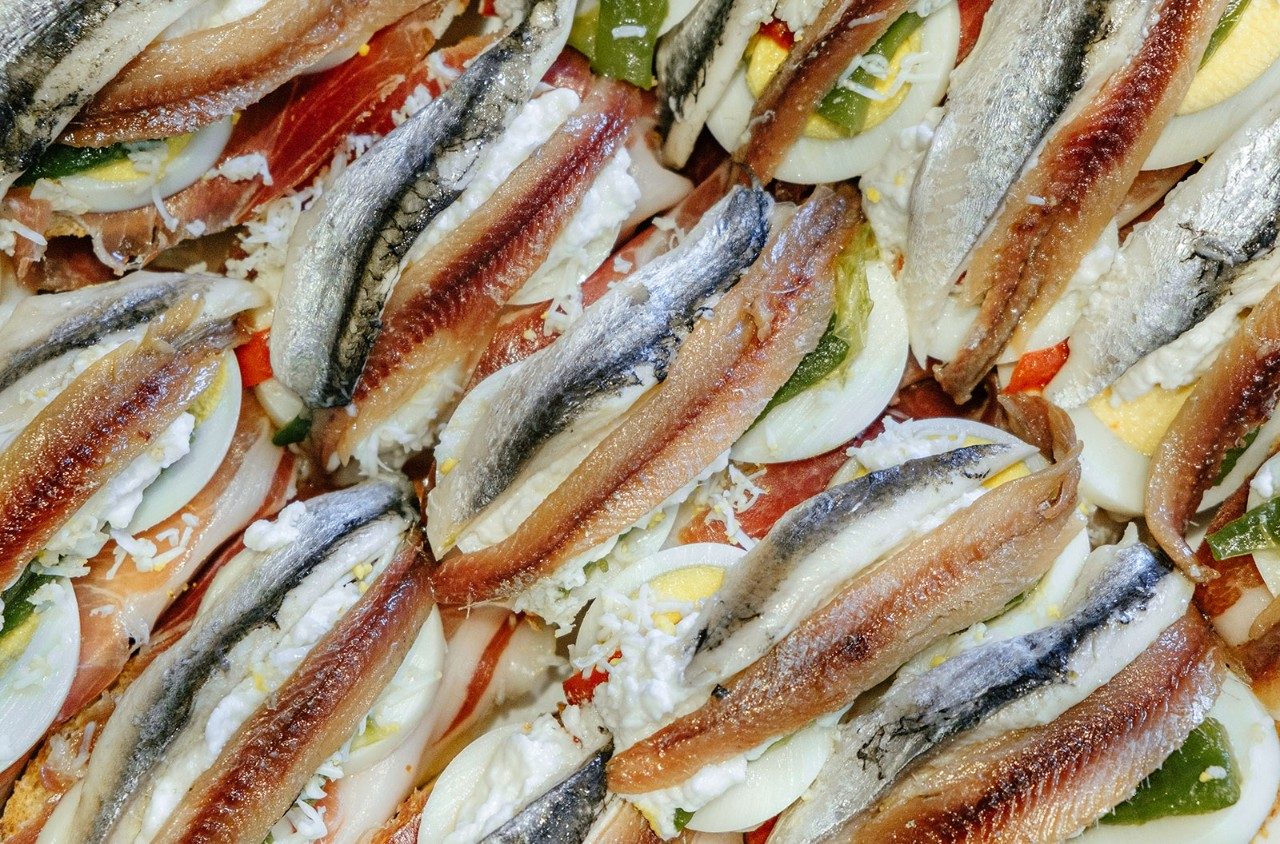
In San Sebastián, food is life and dining out is for everyone. But the hottest places to eat require an invitation.
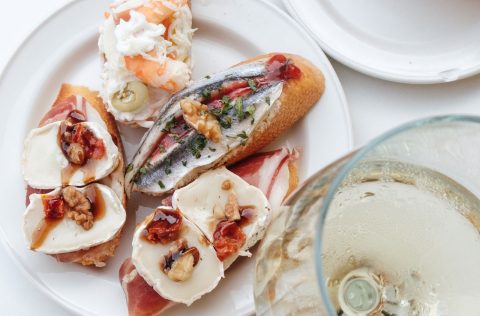
“Nah, that’s just Netflix,” says Mikel Martija. Someone has asked our food tour guide if he gets up early for the best produce at the local market, like they do on chef-centric TV shows. He tsks. When he and fellow chef Eneko Irizar shop for seasonal vegetables at La Bretxa Market, they go to the same suppliers. “Sometimes they will hide the good stuff under the table for us,” he says with a wink.
Despite Martija’s relaxed approach to procuring his ingredients, food is serious business in San Sebastián on Spain’s Bay of Biscay. The initiated know the city’s credentials: within a 25-kilometre radius of the old town, there are 16 Michelin-crowned restaurants. In the narrow arteries of the city centre, every second shopfront is a purveyor of pintxo or snacks. Suspended in a bowl of fertile land with its toes in the wild North Atlantic, even the landscape of Donostia – as it’s known in the local Basque language – demands indulgence. The sea and forest offer abundance, from stout mushrooms to crisp winter walnuts and ocean-salted mussels. But you don’t have to book a table in a fine-diner to get a taste.
“That’s how you know a place is good,” Martija shouts to us above the din at Gorriti Taberna (San Juan Kalea, 3; +34 943 428 353), pointing to the scrunched receipts under the bar. This unassuming spot is our initiation into the world of pintxo (referring to the Basque verb “to spike”). Typically, the small bites comprise a trio of dependables – an anchovy, a slice of creamy, lard-veined jamón and sharp, pickled Guindilla peppers – pierced with a toothpick. We enjoy piles of boiled eggs, jamón, anchovies and sardines with a glass of txakoli, a local sparkling white wine poured into tumblers from such a height that the bartender has to crane his neck to achieve it.
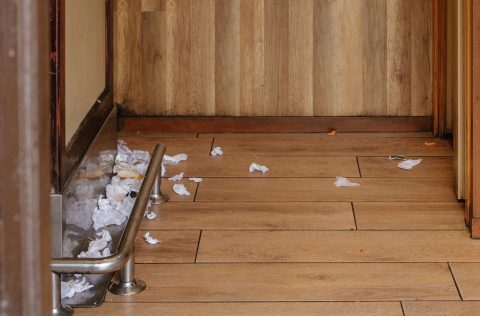
It’s hamaiketako, the local equivalent of elevenses, and the place is full of Donostians. It’s thrillingly foreign to me, a desk-lunch devotee, that a city pauses to eat when the working day has barely begun. “This time means pintxo and a glass of wine then back to work,” says Irizar, co-owner of Mimo, the food experience company that runs this tour. “When we stop work to do this, we don’t drink at night because we need to forget work.”
Outside, it’s raining. The sky spits on our group of 11 while we buy bouquets of chubby, white asparagus. It pelts us while our two leaders discuss buying pearl-like teardrop peas (a delicacy known as “vegetable caviar” that’s only available for three months of the year). It doesn’t let up as we wander past the incongruous McDonald’s housed in a Belle Époque building, which Irizar has nothing but expletives for. Rain is so common here that there are words dedicated to its variations, from galerna (a sudden storm with violent winds) to xirimiri (the persistent light rain that shrouds the city). The heavens give residents plenty of excuses to spend time inside.
“When you meet with your friends, you start in the kitchen,” says Irizar. “At the end of the day, you don’t move from the kitchen. Food is something super-social.” A culturally crucial aspect of the dining scene here is one that most visitors will never have the opportunity to experience. That’s part of the reason I’m trailing Irizar and Martija – both are members of txokos (gastronomic societies), where members cook, dine and socialise away from prying eyes. There’s a network of them around the city, some with origins stretching back 150 years, hidden behind unassuming façades, sober signage and windows with drawn blinds. I wouldn’t have looked twice at the sign we’re about to walk under – “1901 Euskal Billera 1940” – but we have a willing member, Martija, on our side. This is one of San Sebastian’s oldest txokos.
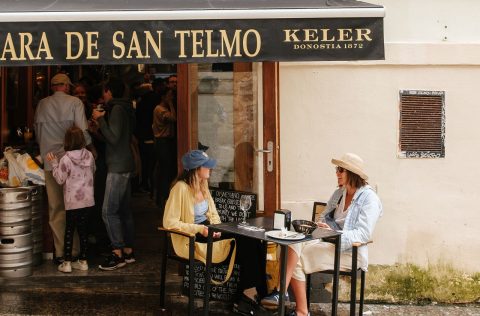
Until recently, women weren’t allowed inside the societies at all but times have changed – reluctantly for many, says Irizar. At Euskal Billera, permission for women is relegated to entry only. Forbidden to clean, cook or even enter the kitchen, my participation is limited to being served. “Women are chilling like the queens,” says Martija to laughter.
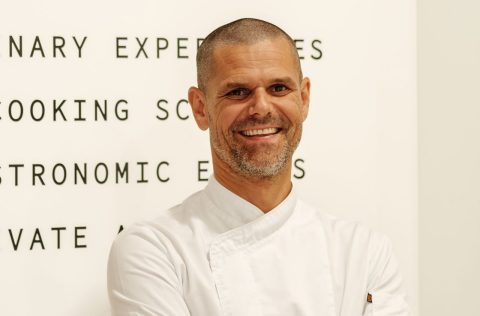
Two men from the group take to the kitchen while Irizar pours cider. He lifts the bottle as high as his shoulder – the kind of pouring height I’d scold my kids for trying – and tips a frothy trickle into my glass. Forget the fresh, sugary versions your pub palate knows; traditional Basque cider is ragged and cloudy, drunk in small (yet frequent) quantities to retain the aroma. Most of it lands in the glass. Soon, the plump sardines we bought from the market are served slick with oil and golden coins of garlic alongside crusty bread. The men show us how to pluck the flesh from the fish’s spindly spine with our teeth. Alba García, from the northern Spanish city of Gijón, works for Mimo and is filming our safari. She tells me that adjusting to life in this corner of her home country has been difficult. “People are a little bit closed. It took some time to become part of the city.” Martija says that members of his txoko aren’t pleased about inviting visitors into its private world but he waves them off. “Things are changing,” he proclaims. It feels as much an appeal to his peers as an affirmation of fact.

Wandering the city after the tour, I start to pick out the plain façades with unlit signage, the shuttered txokos coming into focus like objects in a magic eye artwork. In between, people spill from the doorways of bars despite a haze of xirimiri, the city open, welcoming and always ready to serve.

Start planning now
SEE ALSO: How to Experience the Best of Barcelona With Kids
Image credit: Raquel Guiu


